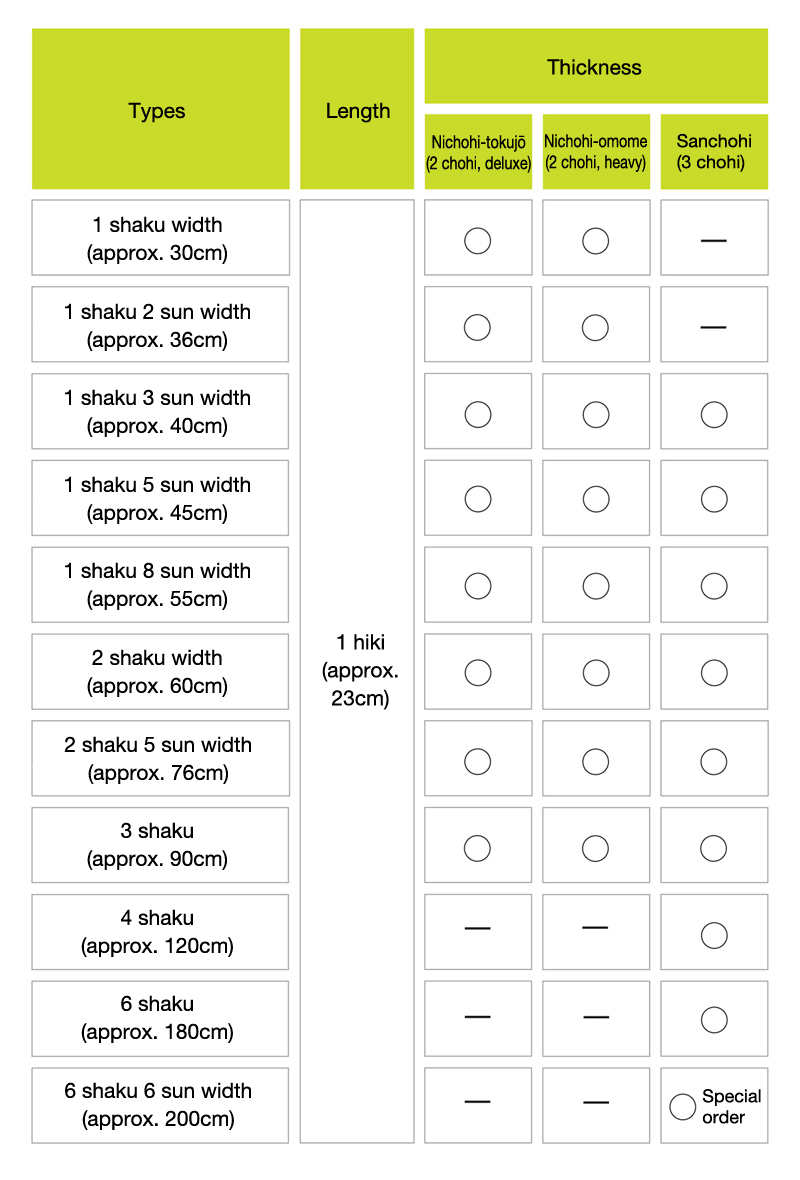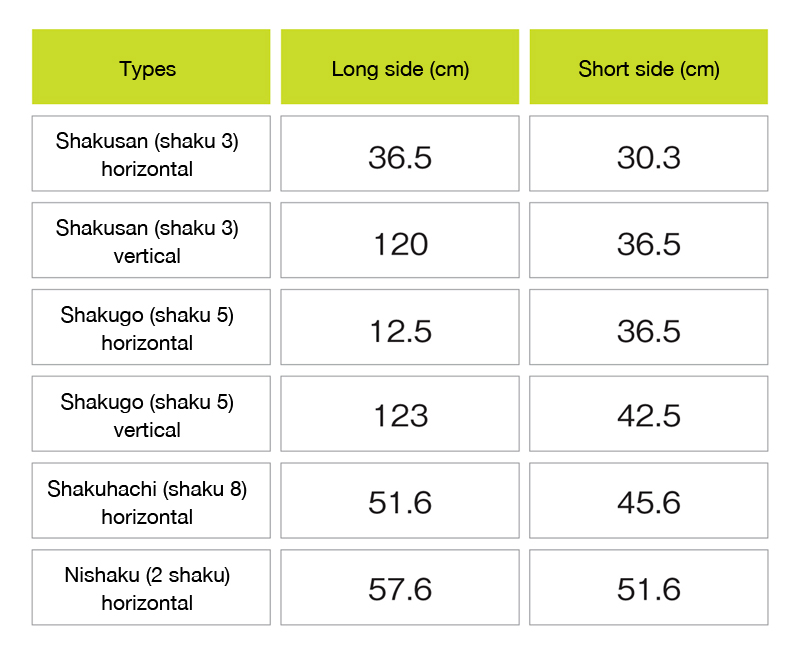Eginu (Silk Canvas) and Kinuwaku (Canvas Frame) Sizes
絵絹・絹枠サイズ
Eginu/Kinuwakusaizu
CATEGORIES
In addition to washi and boards, Japanese paintings are also painted on silk canvases known as eginu which are silk fabric intricately woven with uniform thread density, mainly used for pictures mounted on hanging scrolls. The wooden frame which is used to hold the silk in place to make it easier to draw is called kinuwaku.
The category of eginu depends on the thickness of the silk (determined by the type of warp). It is categorized into nichohi (2 chohi), nichohi-omome (2 chohi, heavy), sanchohi (3 chohi), etc. The bigger the number, the greater the thickness. The canvas is approximately 23 cm in length (1 hiki) but the width of nichohi and nichohi-omome can vary in size from around 30cm (1 shaku) to around 90cm (3 shaku). The width of sanchohi can vary in the range of approximately 40cm (1 shaku 3 sun) to approximately 180cm (6 shaku), but a specially ordered canvas can be as wide as around 2m. The important sizes of a kinuwaku are the inner dimensions of the frame, where the image will be drawn, and the width. Common sizes include shakusan (shaku 3), shakugo (shaku 5), shakuhachi (shaku 8) and nishaku (2 shaku), and the frame type can either be horizontal (yokomono) or vertical (tatemono or nagamono). With a yokomono frame, there is no significant difference in the lengths of the long and short sides. With a nagamono, on the other hand, they differ greatly. In recent years, kinuwaku frames are also available in standard canvas sizes for oil paintings such as F6, F8 and F10.
When stretching eginu over a kinuwaku, because the inner dimensions of the frame determine maximum size of the image, the eginu should be cut 4 to 6cm larger than the inside dimensions. The untrimmed edge of the eginu should face sideways.
RELATED PAGES
- Sizes of Eginu

- Kinuwaku (inner dimensions of the frame)

